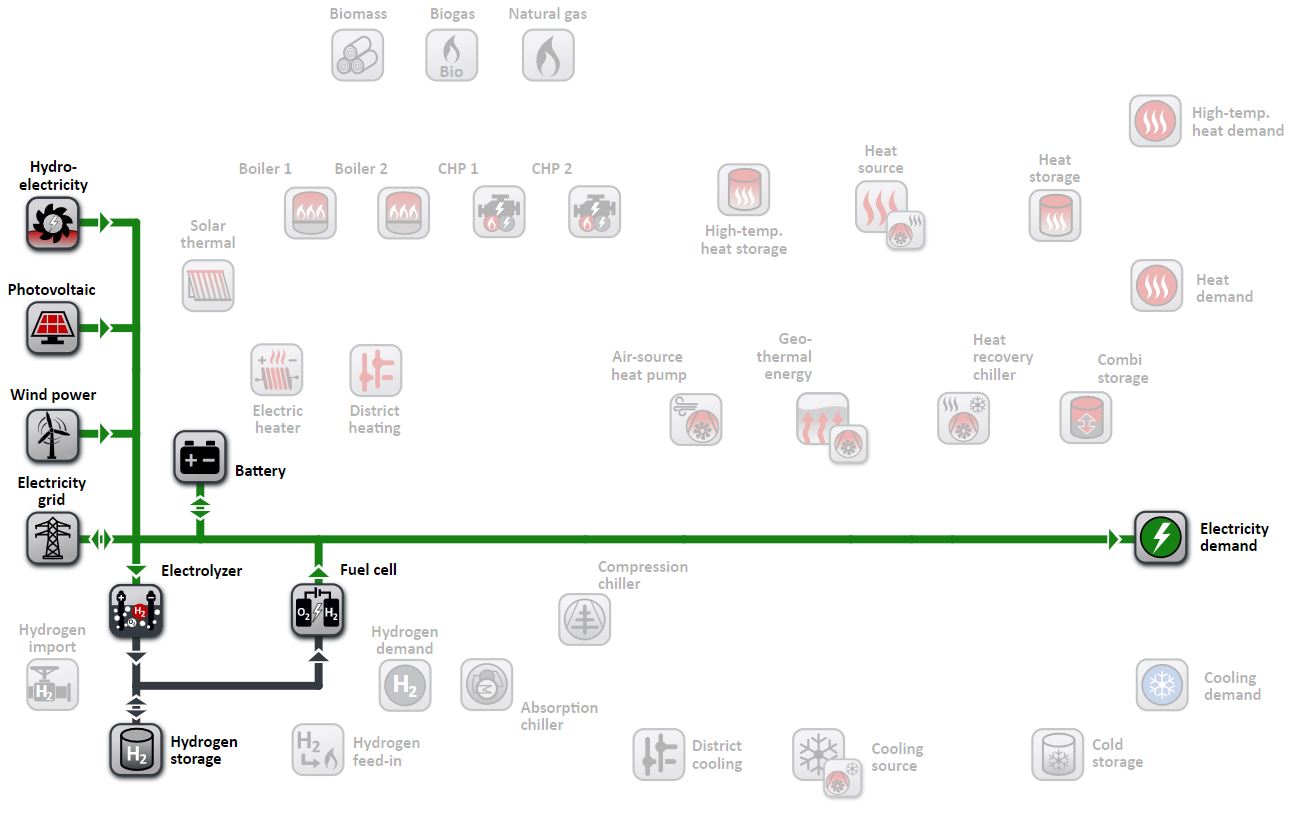nPro: Software tool for planning microgrids and distributed energy systems
Planning microgrids (island systems) and distributed energy systems in general is complex and requires advanced software tools. In this article, you learn what is important for the planning and how nPro can help with the dimensioning of storages.
Planning of microgrids
A microgrid is a local power grid that comprises only a few power generation plants and power storage facilities and supplies a small spatial area. It either has no connection to another higher-level power grid or draws only a small part of its energy from external grids. Microgrids are also referred to as island grids, provided there is no connection to other power grids. A wide variety of storage technologies can be used to store electricity, such as
- batteries and accumulators,
- hydrogen storages or
- other electricity storages, such as air liquefaction or flywheel mass storage.
Disadvantages of microgrids (island network)
Microgrids have several disadvantages compared to power grids that are coupled to a higher-level interconnected grid. The central disadvantage is the reduced reliability due to the reduced generator redundancy. As a result, higher outage times are to be expected than in a fully redundant grid (n-1 criterion). In addition, increased voltage and frequency fluctuations occur more often, which can have a negative impact on the operation of power-supplied plants. Due to the lack of import possibilities from other power grids, high storage capacities must also be kept available, which reduces the economic efficiency of microgrids.
Tool for sizing batteries in microgrids
The dimensioning of storage capacities is crucial for microgrids, especially if there is no physical connection to an external power grid. In the future, microgrids will often have to operate with a high share of renewable energy. However, photovoltaic systems and wind turbines have a fluctuating generation profile and are thus not available as an energy source all year round. Therefore, suitable electricity storage systems must be provided, which enable all electrical demands to be met throughout the year.
Use of hydrogen in microgrids
In addition to electricity storage systems such as batteries and flywheel storage, the use of hydrogen in microgrids is also an efficient way of meeting year-round demand from fluctuating renewable energy sources. Hydrogen can be stored with low losses even over longer periods of time and can thus be used to temporarily store an excess supply of electricity on a seasonal basis. By using electrolysers, hydrogen is produced at times when there is an excess supply of electricity and is temporarily stored under pressure. Stored hydrogen can be converted back into electricity in fuel cells. Depending on the design of the fuel cell and the operating parameters, excess waste heat from the fuel cell can be reused, for example in a heat network. This creates a sector-coupling energy system that includes the heat sector in addition to the electricity and gas sectors. However, the dimensioning of hydrogen storage systems is complex: If the storage systems are too small, they will not be able to bridge long periods with a shortage of renewable electricity. If they are designed too large, this reduces the economic efficiency of the overall system. For an initial estimate of the optimal storage capacity of hydrogen storage systems, a design calculation can be performed in the nPro tool. This determines the optimal technology capacities on the basis of a design year. To increase the reliability of the design, different design years with different weather and demand profiles can be calculated. The nPro tool uses a techno-economic optimization approach based on mathematical optimization models for dimensioning.

This might also interest you
nPro software
Plan your energy system with nPro!

 English
English
 Deutsch
Deutsch


